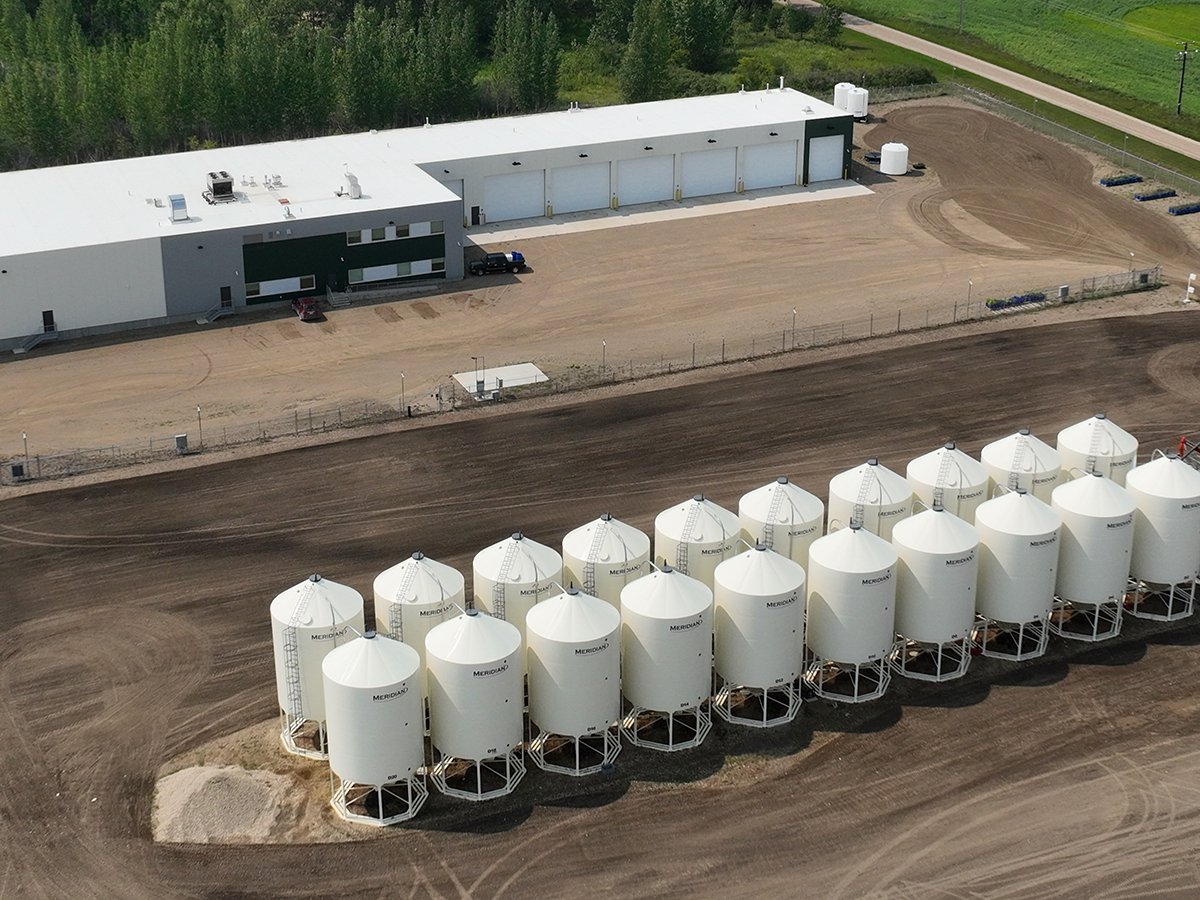If a Canadian wants to buy life insurance with their phone, the insurance industry has an app for that.
RBC promises that it will provide a life insurance “quote in 60 seconds”. Other companies say people can apply in 10 minutes, with no medical or blood tests.
Kristjan Hebert would like to see something similar for crop insurance.
“I want to be able to pick up my cellphone and iPad, 365 days of the year, to decide what I’m going to insure, to what level and what peril,” said Hebert, who runs Hebert Grain Ventures, a 30,000 acre grain farm near Moosomin, Sask.
Read Also

Saskatchewan firm aims to fix soil with compost pellets
In his business, Humaterra, Leon Pratchler is helping farmers maximize yields in the weakest areas of their fields through the use of a compost pellet.
“I can buy life insurance every day of the year, I can buy house insurance every day of the year… and yet in the world of crop insurance, it’s a one time of year.”
Hebert was part of a panel discussion on risk management and innovations in ag insurance, at an agricultural conference in downtown Winnipeg Oct. 20. The conference was hosted by the Enterprise Machine Intelligence and Learning Initiative (EMILI), a digital agriculture accelerator in Manitoba.
On stage during the panel discussion, while wearing a black baseball cap, Hebert explained that financial risk can be substantially different from region to region and different from farm to farm.
“There are government products to help (farmers) with risk management up to 70 percent of their normal revenue. We want private (insurance) to top it up to 90 (percent),” he said. “Right now, I think there’s a lot of farms that feel under-insured…. So, they aren’t optimizing or maximizing output.”
A large part of the “under insurance” problem is the cost of fertilizer, seeds and chemicals, which have exploded in the last year. In the case of fertilizer, prices have doubled or worse.
The volatility of input prices is likely to continue, but farmers don’t have the insurance tools to offset that sort of risk.
“Long term, we need to have more (insurance) products that are tied not only to yield,” said Hebert, who is a licensed adviser for Global Ag Risk Solutions, a company that offers margin-based insurance for farms.
As an example, a grower may need to apply additional fungicides and other chemicals in June, to protect and maximize yield potential. But where is the insurance product to offset the additional financial risk?
“Instead of just being able to buy crop insurance, one time at the beginning of the year… can we buy it throughout the season as you go? If you’re going to be applying more inputs, mid-season, can you add $50 per acre coverage?” asked Lysa Porth, an economics professor at Ontario’s University of Guelph and agricultural risk management expert, who was also part of the panel discussion at the EMILI conference in Winnipeg.
The consequence of not having such risk management tools is that producers “farm to the average,” Porth said.
“You make these decisions that aren’t optimal (to reduce risk).”
Some of those decisions could be adding less fertilizer, being more cautious about marketing, or maybe storing more grain into the next growing season.
“All of those strategies could be decreasing net farm profitability,” Hebert said.
There may be a need for more insurance options, from private providers, but there are some complicated details to sort out.
Such as: how do farmers share data, so that insurers can understand the risks associated with certain practices and decisions?
“If you have that information about practices and inputs, (then) you can start to do the analysis (on risk),” Porth said.
Farmers may have data on yield, how much fertilizer they apply per acre and so forth, but the data is poor compared to something like the life insurance industry, which would have mountains of data on things like smoking, blood pressure, health and longevity.
“I’m not trying to cut down the industry, because I’m in it, but in general our data is still crap,” Hebert said. “That’s why we still don’t have a lot of innovative (risk management) products…. The numbers aren’t known enough.”
It might be known that zero-till keeps more moisture in the soil, but what does it exactly mean for crop insurance risk? Does zero till make a bigger difference with certain soil types?
“It’s crazy the volatility in farms that are all within 50 kilometres. They have the same land, it’s all tied to management,” Hebert said.
Another hurdle is re-insurance.
Provincial crop insurers take out re-insurance, so they have the financial backing in the event of a catastrophe. That sort of protection was needed in a year like 2021. With an exceptional drought in Western Canada, thousands of farmers recorded yields of 25-50 percent of normal.
“The reinsurers will take those really big risks,” Porth said, adding they can handle the risk because they are global and diversified.
But it’s harder for smaller, private companies to get reinsurance, because they lack the scale that’s appealing to reinsurers.
“How do you protect (against) those catastrophic risks?” she added. “If farmers are wanting private products, it’s a big barrier…. The Crowns have a backstop, as well. There’s something called the provincial reinsurance fund of Canada. They have that extra protection and because of that, they can buy private re-insurance. If you’re a private company, you don’t have access to that.”
Porth said Canada doesn’t have a major reinsurance company, but maybe there’s another solution to the problem.
“Let’s just hypothesize for a moment that we could create a reinsurance fund for Canada, to support the delivery and innovation of private products across Canada,” she said. “Unless you have the scale that government does, you always need reinsurance.”
















